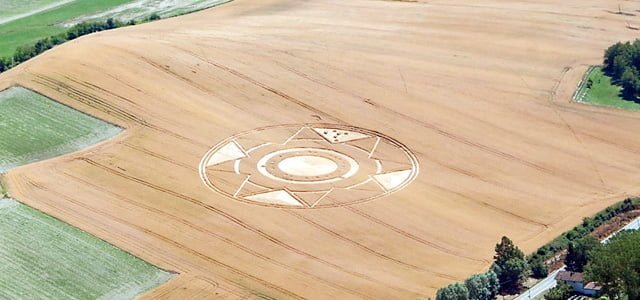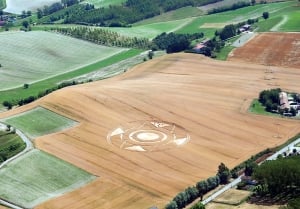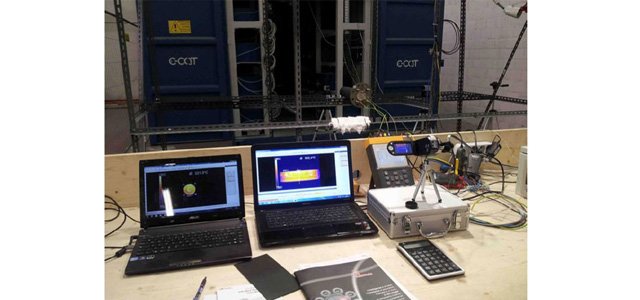skeptopathy
Web definitions
Pathological skepticism; an irrational belief that a phenomenon must be false merely because it is unusual.
en.wiktionary.org/wiki/skeptopathy
There is no better example of skeptopathy doing great harm to humanity than the history of cold fusion. Everyone is probably familiar with Fleischmann and Pons’ claim that they had discovered a nuclear reaction that occurs at (or near) room temperature, compared with temperatures in the millions of degrees that is required for hot fusion. Furthermore, I bet everyone is also under the impression that their claim had been discredited – wrong! Pons and Fleischmann never retracted their claim, but moved their research program to France after the controversy erupted. [1]
“I would sooner believe that two Yankee professors lied, than that stones fell from the sky” – Thomas Jefferson, 1807 on hearing an eyewitness report of falling meteorites.
In March of 1989 Stanley Pons and Martin Fleischmann introduced us to a new field of science called “Cold Fusion.” It appeared to contradict prevailing nuclear fusion theory. Nuclear reactions at room temperature were generally unheard of before Fleischmann and Pons (although they are not unheard of today – for instance crystal-piezo and acoustic inertial confinement fusion). The scientist’s claims were viewed as inconceivable and impossible, and they were accused of making reckless unsupported unscientific claims. Furthermore, they were shamed for discussing their claims in a press conference before their paper’s publication. [2]
“The more important fundamental laws and facts of physical science have all been discovered, and these are now so firmly established that the possibility of their ever being supplanted in consequence of new discoveries is exceedingly remote…. Our future discoveries must be looked for in the sixth place of decimals.” – physicist Albert. A. Michelson, 1894
Belief in the validity of Fleischmann and Pons’ claim ought to have been based solely upon the repeatability of their experiments. Unfortunately, scientific investigation is conducted by men who are prejudiced by their belief system, economics, and politics. Fleischmann and Pons’ claim was hard to believe, was a direct threat to hot fusion research, and it upset the status quo in many ways, so many people were upset. Furthermore, their experiments were difficult to replicate, and the effect called “cold fusion” turned out not to be the same as what we refer to as “hot fusion.” The stage was set for scientists, the media, and laymen to exercise pathological skepticism and prematurely label it a hoax rather than give Pons and Fleishchmann the benefit of the doubt that the effect was real. As a result of cold fusion being discredited few scientists dare work in this area of research for fear of being labeled crazy by their colleagues, and being starved of research funds. [1]
“All a trick.” “A Mere Mountebank.” “Absolute swindler.” “Doesn’t know what he’s about.” “What’s the good of it?” “What useful purpose will it serve?” – Members of Britain’s Royal Society, 1926, after a demonstration of television.
“The probably better experimental work…has been carried out in Siena since the Early Nineties, by a group of physicists composed by Sergio Focardi (University of Bologna), Francesco Piantelli (University of Siena), Roberto Habel (University of Cagliari), but it did not lead to a system capable of generation useful amounts of excess energy for normal industrial or domestic applications. In Siena, in fact, the three scientists – using hydrogen and nickel as the only “ingredients” of the reaction, plus an appropriate amount of heat supplied to the system – manage to get out a double thermal energy than the electrical energy provided in input. Obviously, if there were no some “unknown” reactions to produce this little but detectable result, you would get a lower thermal energy, due to the significant losses that you always have turning a form of energy into another.” [3]
On April 30, 1989, cold fusion was declared dead by the New York Times. The Times of London called it a circus that same day, and the Boston Herald attacked cold fusion the day after. Douglas R. O. Morrison, a physicist representing CERN, was the first to call the Pons and Fleischmann episode an example of pathological science. Scientific papers concerning cold fusion were then turned down for publication in peer reviewed journals. [1] Even though almost everyone in America “knows” that cold fusion has been “debunked,” is a “hoax,” and is “pathological science,” those scientists in Italy were getting DOUBLE the energy return using this effect. One would think that such news would have changed minds in the scientific community, but it did not.
“The energy produced by the atom is a very poor kind of thing. Anyone who expects a source of power from the transformation of these atoms is talking moonshine” – Ernst Rutherford, 1933
Fast forward to today. The International Conference on Condensed Matter Nuclear Science, (ICCF) has just wrapped up at the University of Missouri. Scientists from around the world reported on their “cold fusion” progress (the exothermic reaction is called by various names). [4] It is no longer a valid scientific question if cold fusion is legitimate, but only what is the scientific theory behind the effect. [5] For some it is still hard to believe because science can’t yet explain how it works, even though mankind used fire for tens of thousands of years before being able to explain how it works. A third-party verification report was recently published of a product that will hit the market this year, showcasing a cold fusion cell that was hot enough to create dry steam (which is necessary to generate electricity). The results show that energy density (i.e. the amount of energy by weight) was 5 orders of magnitude (tens of thousands of times) over that of fossil fuel. [6] That inventor has said that the time for words is over, and the proof will be when a cold fusion product is introduced to the market. If that is the case, then we won’t have to wait long for proof.
To wrap up, the history of cold fusion is a checkered one. It is an unusual phenomenon, and as such is open season for skeptopathy. I have talked to many people about the subject, and while a few strongly suggest that cold fusion is pathological science (based upon Wikipedia entries or Pons and Fleischmann’s treatment in the media), the vast majority are simply convinced that it will never emerge because powerful fossil fuel interests will bury it before it reaches the market. In other words, most people exhibit skeptopathy of a different form: they have heard rumors of revolutionary energy technologies before, but haven’t seen them emerge onto the market, and therefore irrationally believe cold fusion will never reach the market. Unfortunately, skeptopathy has done a number on cold fusion research and development because unless investors believe their investment will pay off, they are very hesitant to fund it.
Ironically, for those who still exhibit (what I would define as) skeptopathy toward cold fusion, you can read this paper that I wrote on the subject: https://coldfusionnow.org/the-evidence-for-lenr/
Notes
“Cold Fusion,” Wikipedia. 2. Krivit, S. “The Mistakes of Pons and Fleischmann and Why Their Discovery Was Initially Thought to Be a Mistake” New Energy Times, March 23, 2007. 3. Menichella, M. “Secret of E-Cat” pages 13-14, Consulente Energia Publisher, 2011, Pdf format. 4. “ICCF – 18 Day 5: Presentations and Awards,” Ruby Carat, Cold Fusion Now!, July 25, 2013. 5. “NASA Confirms Conclusive Evidence for LENR,” Hot & Cold Fusion, March 31, 2013. 6. “Indication of anomalous heat energy production in a reactor device,” Cornell University Library, June 7, 2013.






